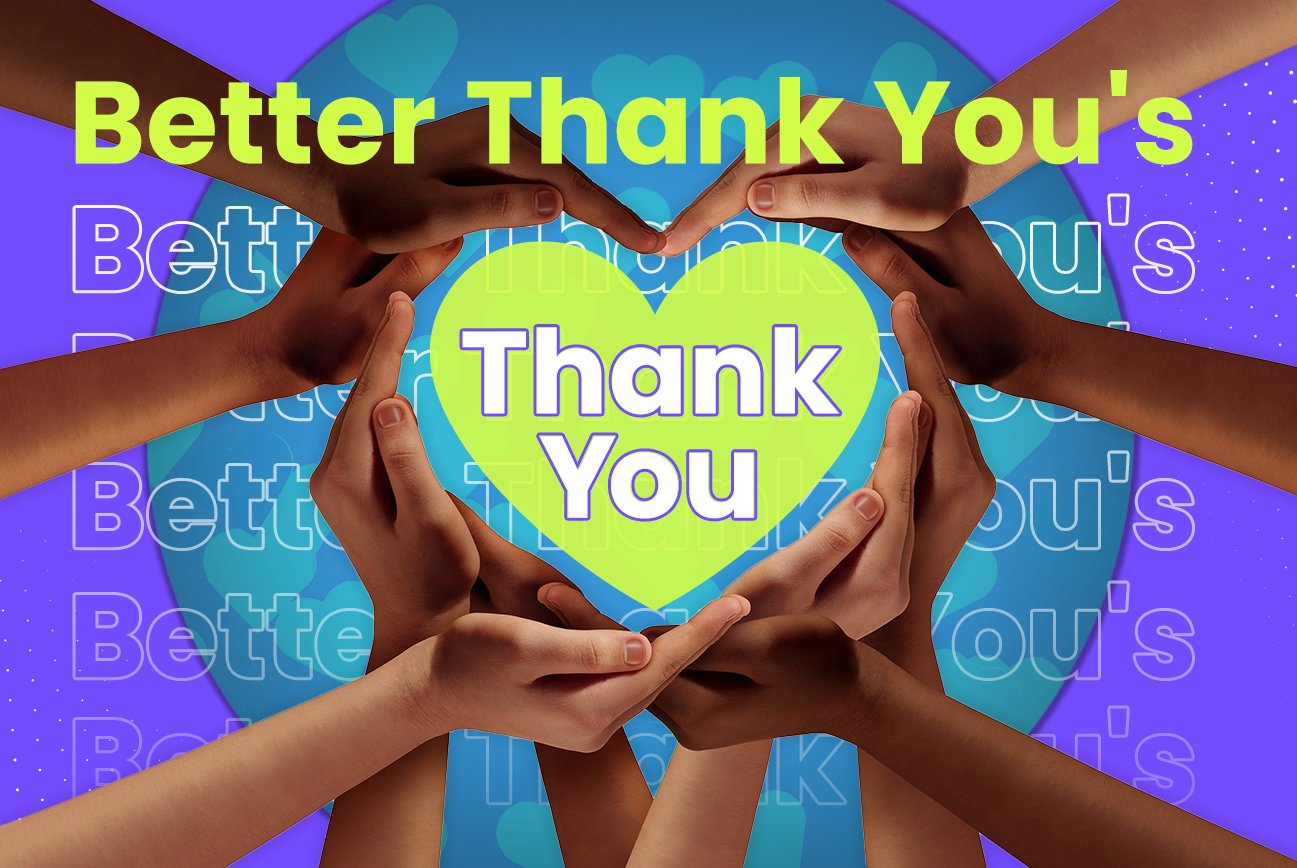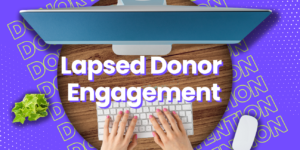Doesn’t it feel good to be thanked and acknowledged for a job well done? Everyone wants to feel validated and appreciated. And that’s why building better thank you’s is such an important part of fundraising.
Saying thank you the right way makes donors feel closer to your mission. It gets them excited to engage with your organization and helps you retain them long-term.
So, your thank you’s need to be:
- Prompt – Say thank you within 48 hours of a donation.
- Thoughtful – You can do better than “Thank you for your $50 gift.”
- Repetitive – When communications flow, relationships grow.
- Opportunistic – Your donors can do a lot more than write a check.
Think about these guidelines every time someone gives to your organization. These principles can help you get started on the road to better thank you’s.
However, these just scratch the surface of effective stewardship strategies.
If you’re ready to take it to the next level, use the following tips to create better thank you’s to follow up your next appeal!
Finish telling the story.
As you know, an engaging story is an important part of any fundraising campaign. But the story isn’t over just because the donor made a gift.
Link back to the narratives in your appeal and let donors know how their gift helps make the next chapter in your story brighter than the last. Being donor-centric will help you build better thank you’s.
So, make sure your follow-up makes the donor feel like the hero of your story.
“Your gift provided our dogs with life-saving vaccinations. Thank you!”
Use powerful visuals to drive the message home.
If someone donated to an animal shelter, use happy pictures of the animals there. This could be especially powerful if you used images that evoked sadness in your appeal.
And remember, donors aren’t really interested in your nonprofit’s financial goals. They want to know how they are furthering a cause that is important to them.
So, focus your thank you’s on the impact they had in your story, not how they helped you reach a fundraising goal.
READ MORE: Is your nonprofit suffering from boring storytelling?

Get a little personal.
You can build better relationships when your outreach is backed by strong donor data. You can’t send the same email to everyone who gives and expect to make a good impression.
You can start by including a donor’s gift amount. But this is the most basic level of personalization. Remember, you want to be thoughtful and make your thank you’s really stand out. So go a step further by reminding a donor how long they’ve been supporting your mission.
“Your continued support has…”
Use what you already know about your donors to go the extra mile.
Donor anniversaries are a great reason to reach out and let donors know how they’ve made a difference over time. It’s a great soft touch that doesn’t follow a prior gift or make an additional ask!
READ MORE: Easy ways to use donor data and raise more money.

Who’s it from?
Sending the letter or email from someone familiar to the donor is a great way to create better thank you’s. There are a couple of different approaches here, so consider what seems like the best fit for your organization and of course, the donor.
It’s common to send thank you messages from someone within your organization.
Personal emails and letters from board members and presidents are common choices.
But you can also send it from someone closer to your organization’s daily work, like a volunteer coordinator, to help reinforce how donations are put into action.
A letter of appreciation from the head of the animal shelter or a child who can now attend school can be extremely powerful. If privacy is a concern, you can send blind letters that only include the first name of your beneficiary.
Another option is to have a fellow donor say thank you.
However, this should probably be a long-time, high-level donor with some name recognition in your organization. This can help build a sense of community among your donors and can be a powerful way to nudge your mid-level donors toward joining your major donor ranks.
READ MORE: Simple strategies to amplifi your next email campaign.

Don’t close the door.
Better thank you’s give the donor an opportunity to engage even further with the organization. But that doesn’t mean you should hit them with another appeal.
You can encourage donors to stay engaged with your organization in many other ways.
For example, do you let donors know about upcoming volunteer opportunities? A donor might not be ready to write another check. But they might want to help your nonprofit continue to reach its goals.
Just use your data to make sure you’re only letting donors know about outings that are in their general area.
Does your organization host a gala or other high-profile event? Then, let your loyal supporters know you’d like them to attend! Showing your donors that you value them as part of your family and want to celebrate with them is a great way to grow the donor/organization relationship.
You can use this opportunity to learn a little more about your donors. Sending a donor survey as part of your thank you can help a lot. For one, it’s another way to tell donors you care more than what’s in their wallets. It shows that you value their input.
And their preferences can also help you make the experience better for other donors.
Surveys can also give you some unique bits of information about a donor. Use these to make your next round of communications even more personal and relevant or to identify ideal prospective donors.
Prove you care.
Remember, your donors aren’t just a source of revenue. You need to show them you appreciate their efforts to further your goals. But you also need to treat them like the individuals they are.
Give your donors some credit. They can tell the difference between a boilerplate message and a well thought out and overall better thank you.
We know the workload nonprofit professionals are tasked with. And it’s not uncommon for stewardship to fall by the wayside.
But not doing enough to thank donors is a costly mistake far too many nonprofits make!
Want to talk through your stewardship strategy with an amplifi development strategist? Click here!









